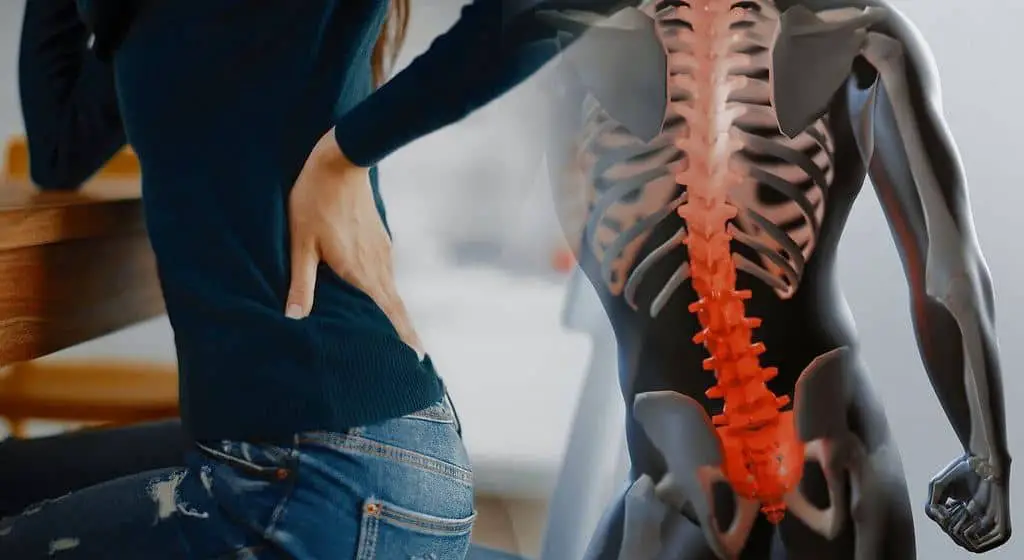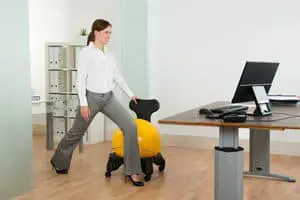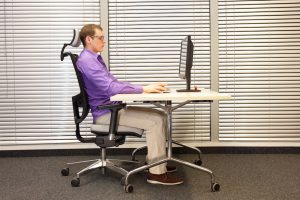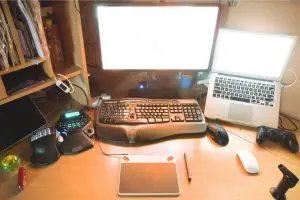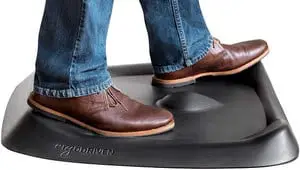Did you know there are 5 to 20 cases per 1000 adults of herniated discs annually? According to StatPearls, dealing with a herniated disc and can’t sit is most common in people during their third to the fifth decade of life, with about double the number of men getting the case than women.
How to sit with a herniated disc? The best sitting position for a herniated disc is to keep your back flat against your chair. Keep your neck and shoulders relaxed, with your eyes looking forward. Remember to maintain a neutral sitting posture. This is when your ears, shoulders, elbows, and hips are straight.
All content and media on Office Solution Pro are created and published online for informational purposes only. It is not intended as a substitute for professional medical advice and should not be relied on as health or personal advice. This post may contain affiliate links.
With that said, there are several considerations when learning to sit with a slipped disc, as sitting puts more stress on your spinal discs. Understanding everything you need to know about this issue can help protect your lumbar herniated disc, especially when you are required to sit for long hours at the office.
What is a Herniated Disc?
A herniated disc, also known as a slipped disc, is a problem in one of the discs (rubbery cushions) that sit between the vertebrae (individual bones). The vertebrae are the bones that stack and make your entire spine. Most people have no symptoms and don’t need surgery.
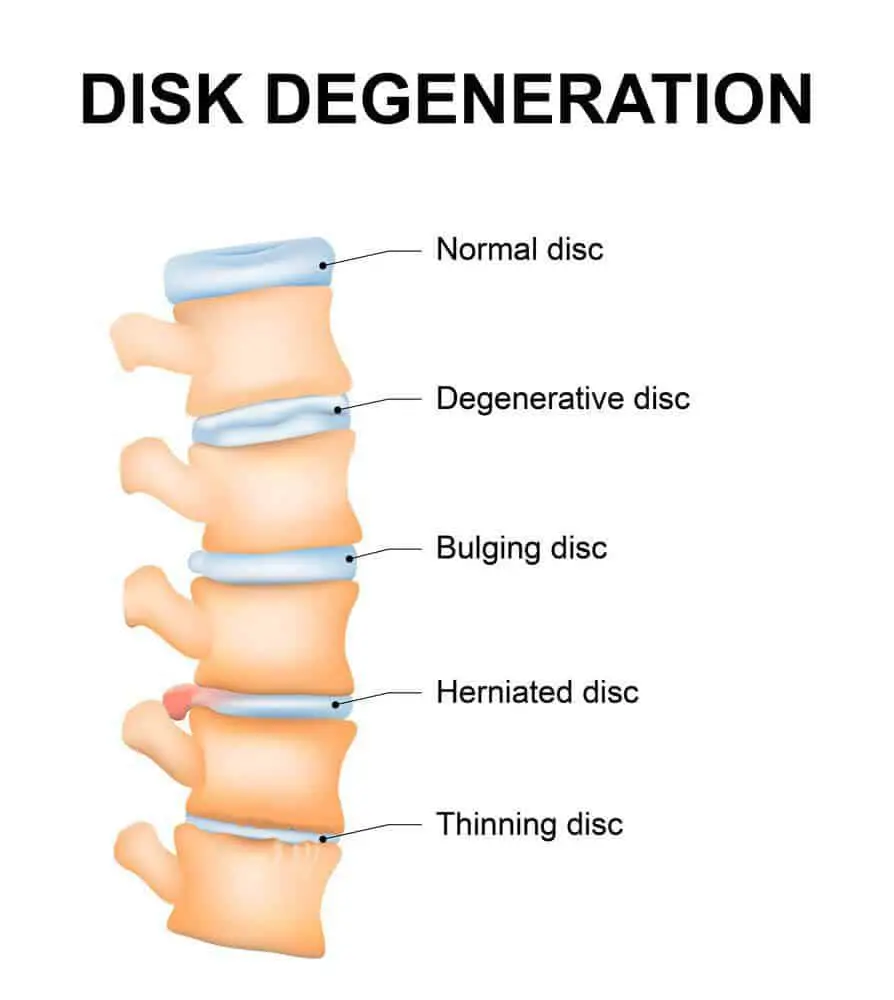
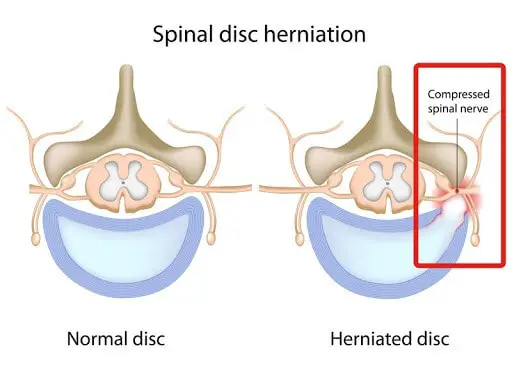
According to the Mayo Clinic, a spinal disc has a soft, jelly-like center (nucleus) encased in a rubbery exterior (annulus). A herniated disc, sometimes known as a ruptured disk, can happen when the nucleus pushes out through a tear in the annulus. This can occur in any part of the spine, resulting in pain.
What Causes a Herniated Disc?
A single injury, sometimes a single strain, can cause a herniated disc. According to the American Association of Neurological Surgeons, regular wear and tear due to aging (disc degeneration) is the biggest culprit of a herniated disc. As you age, your discs become less flexible and more prone to tearing.
Often, it’s difficult to pinpoint the cause of a herniated disc. Certain activities, like lifting heavy objects without proper technique, can result in a herniated disc. Twisting and turning the spine may also rupture the discs. It’s important to use your leg muscles, not your back muscles when lifting heavy objects.
What Are the Symptoms of a Herniated Disc?
The most common symptom of a herniated disc is pain, numbness, or weakness in the spine, usually in the lower back (lumbar spine). Although, this can also happen in the neck (cervical spine). If the herniated disc is pressing on the sciatic nerve, you may experience pain running along the thigh’s backside.
It’s important to note, however, that you can suffer from a herniated disc without any symptoms. We advise you to see your doctor or physician routinely if you have a history of back pain. The best thing you can do is to get the proper diagnosis should you experience any pain or discomfort in your spine.
How to Sit with a Herniated Disc
Because most people will experience a herniated disc at some point in their lives, understanding the best sitting position for a herniated disc is crucial for your long-term health, especially if you need to sit at work for a living. Here are the five things you need to do to sit properly with a herniated disc:
1. Achieve Proper Sitting Alignment
Sitting without proper posture may cause a bulging disc, especially when slouching in a forward-bending position. Not only that, sitting puts more stress on your spinal discs than standing. To help mitigate the risks of a herniated disc during prolonged sitting, keep in mind these sitting posture tips:
- Keep your back straight against the backrest of the chair – Doing so will provide you with support while bearing the weight of your body while sitting. Proper back support is key.
- Keep your elbows level with the desk – Do this when working behind a computer. Having your elbows level with the desk will promote alignment of your shoulders, hands, and wrists.
- Keep your knees level with your hips – Avoid hanging your legs. Doing so puts a tremendous amount of strain on your hips and lower back, especially when sitting for a long time.
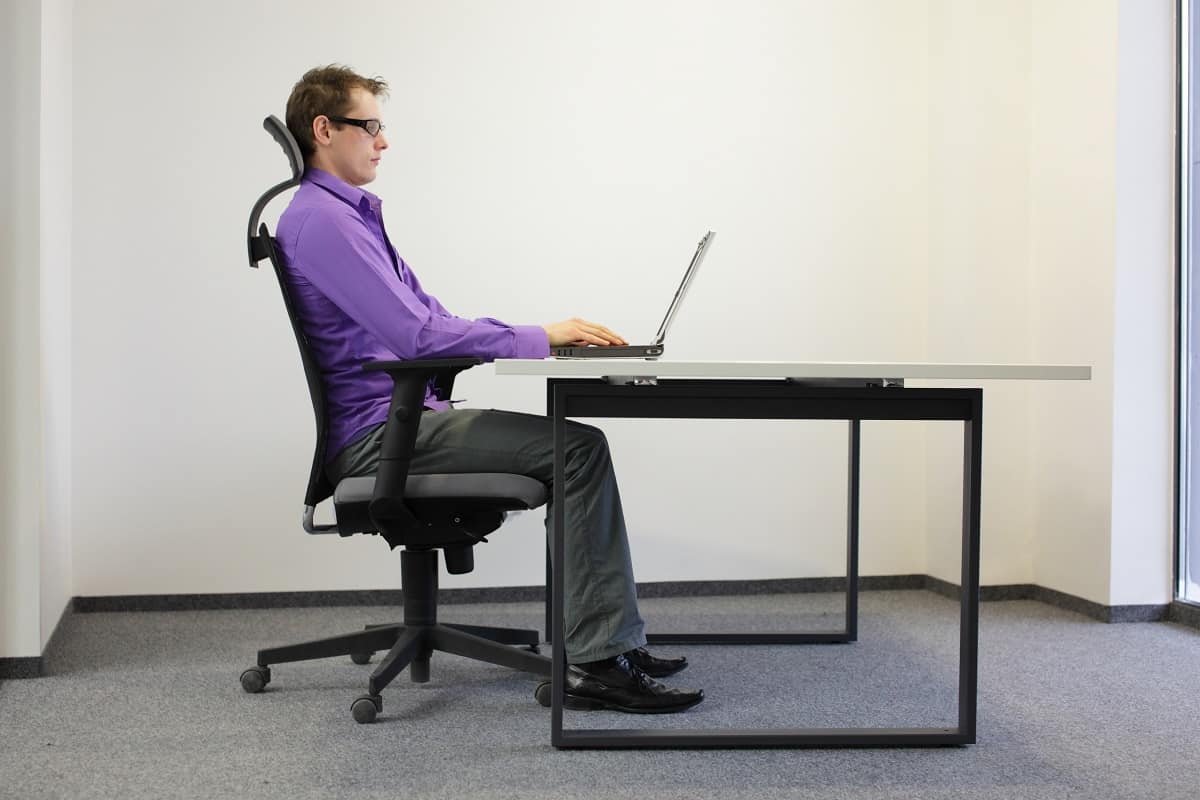
The right ergonomic office chair can help you maintain proper body alignment when sitting.
Over time, we tend to “slump” after sitting for a while. To help maintain a healthy posture, choose the best ergonomic office chair specifically designed to support your spine. The right chair will help you stay tall and upright, helping the disc to stay where it belongs and preventing it from “slipping” further.
2. Support Your Back
However, for most of you who need to work at an office away from home, the next best thing is to use a lumbar cushion to support your entire spine. Often, many people are required to sit for long hours without choosing the right furniture. A lumbar support cushion can help reduce the risk of a herniated disc.
Make sure to choose the best lumbar cushion for your back. The best thing is they are portable, allowing you to bring them anywhere. You can use it in the car or when sitting at the office. We found one on Amazon that is ultra-breathable and made with amazing memory foam. You can check it out right here.
3. Get Proper Feet Elevation
Remember what we said about keeping your back straight, keeping your elbows level with the desk, and having both feet planted on the ground while sitting? The bad news is the last tip is often overlooked. Many people fail to find proper foot elevation when sitting at a desk for long periods.
Because every human body is different, you may find comfort when your feet are slightly higher than your hips. To achieve this, you can use a pile of books or buy an inexpensive footrest to help support your entire lower body. This method can be a great way to switch things up occasionally.
4. Take Frequent Breaks
Even with a perfect sitting posture, sitting for long periods is bad for you. We, as human beings, are built to move around, not to sit around all day. To mitigate the effects of a sedentary lifestyle, it’s important to get out of your chair once every 20 to 30 minutes.
You can get out of your chair to get a glass of water, or you can simply have a short conversation with your office mates. The important thing is to incorporate movement in your workday, either by stretching, walking, or doing light exercise. By taking frequent breaks, you might even take your productivity to new heights.
5. Apply Ice and Heat
When you feel pain in the back, you can use ice to reduce the swelling. Ice will act as an anti-inflammatory and slow down the pain signals going to the brain. By bringing down the swelling, you may find relief from the back pain. Use ice wrapped in a towel once every hour, for 15 minutes.

Applying heat can help soothe pain while promoting healthy blood circulation.
If the pain is under control, usually the day after, you can apply heat to soothe tightness in the muscles. The heat will make the disc more fluid and bring more blood flow into the area, promoting more oxygen to the discs. It’s best to ask your doctor to determine the rotation between hot and cold.
With that said, there’s no guarantee that all of the above information will help you avoid any kind of symptoms related to a herniated disc. However, being mindful of your daily movements, especially during sitting, while taking proper precautions can help you achieve better long-term health.
Related Questions to a Herniated Disc
1. Does sitting worsen a herniated disc?
Sitting may worsen a herniated disc. You may be surprised to learn that sitting puts more pressure on your spinal discs than standing. Prolonged sitting is bad for you. Period. It doesn’t matter whether you suffer from a herniated disc or not. Try to incorporate stretching and walking between periods of sitting.
PRO TIP: Sitting is often required while working. Therefore, it’s paramount to have the right chair while sitting behind a computer. If you’re serious about finding the right chair, consider reading our comprehensive review of the best office chairs for lower body pain. We’ve carefully researched the chairs to help you work in comfort.
2. What should you not do with a herniated disc?
The one thing you should not do with a herniated disc is to put additional pressure on your spine. Certain activities, like sitting for a long time is best avoided when suffering from a slipped disc. If you can, work using a sit-stand workstation. Movement involving bending the spine is also best avoided when dealing with a herniated disc.
3. What is the best way to treat a herniated disc?
These are some of the best ways to treat a herniated disc at home or the office:
- Apply ice and heat – Cold provides an anti-inflammatory effect, while heat helps loosen tight muscles. Ask your doctor for the best rotation between the two.
- Light physical activity – Brisk walking or swimming (low-impact exercise) can help release endorphins in the body, improving your mood naturally.
- Myofascial release therapy – This is more commonly known as foam rolling. The idea is to put pressure on tender/trigger points in the lumbar area, reducing the tightness of the muscles.
Doing certain movements consistently can help relieve pain while building flexibility in the spine. Some are easy to do at home or the office. Here’s a simple video of the best exercises and stretches for a herniated disc to follow along:
According to SPINE-health, it may take up to 6 weeks for herniated disc symptoms to go away. These tips might not work for everyone; therefore, it’s best to find out what works best for you. While sitting is often unavoidable, working while remaining active is a surefire way to prevent further damage in the future.
Bottom Line
Understanding how to sit with a herniated disc takes more than just learning the best sitting position. Often, one of the best things you can do to fight back pain is to incorporate simple activities throughout the day. By doing your part in sitting at the office the right way, you are becoming better every day. 🙂
